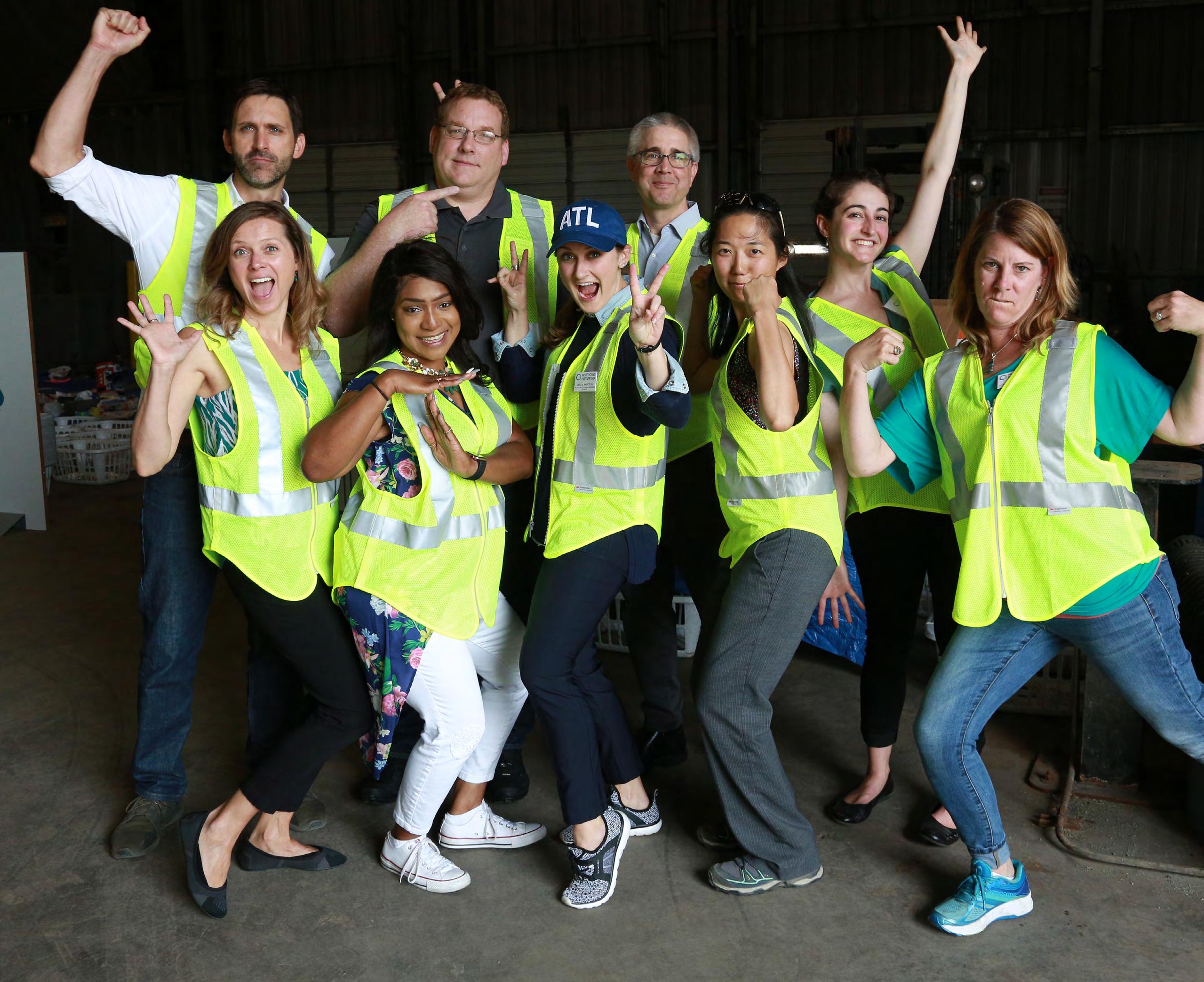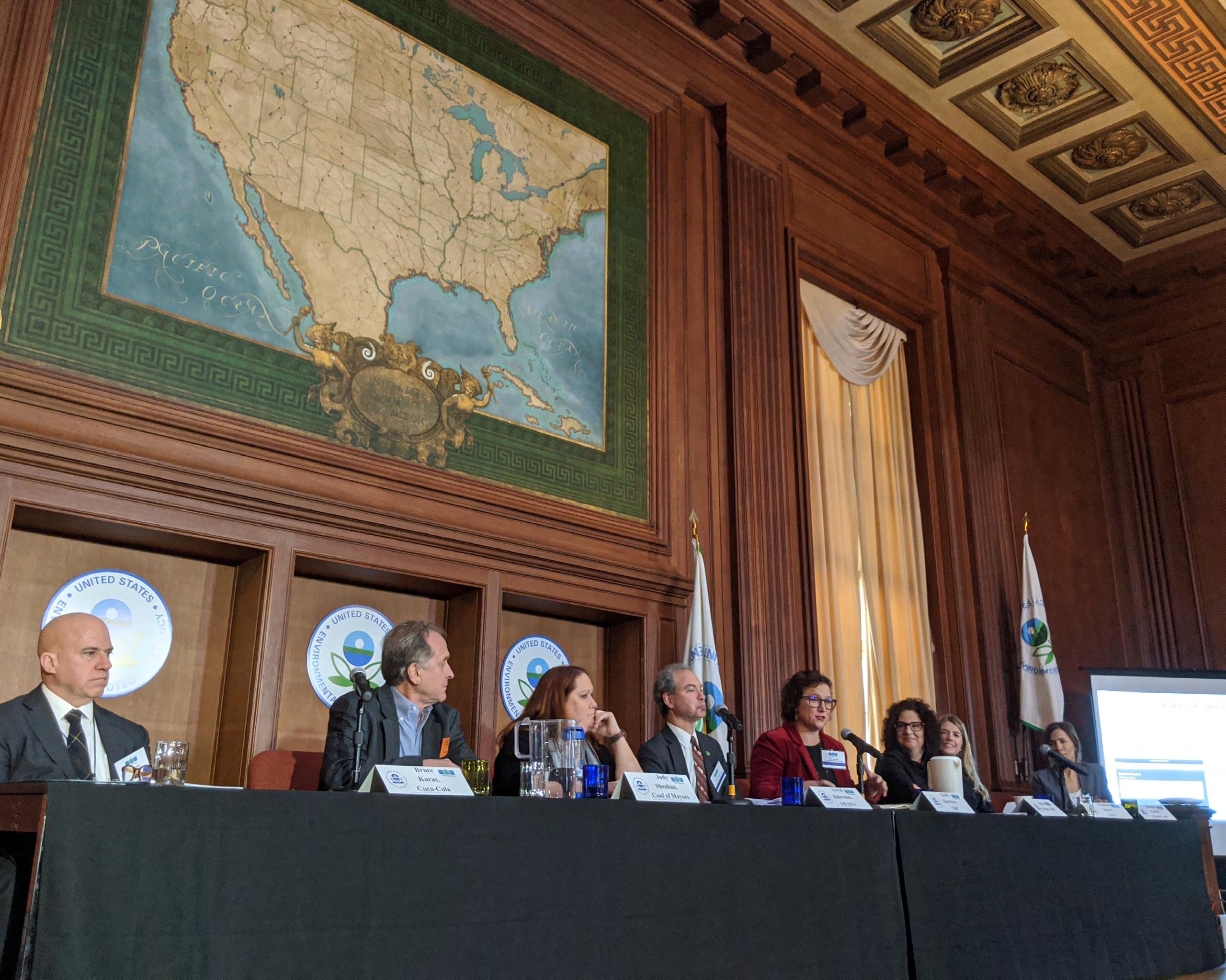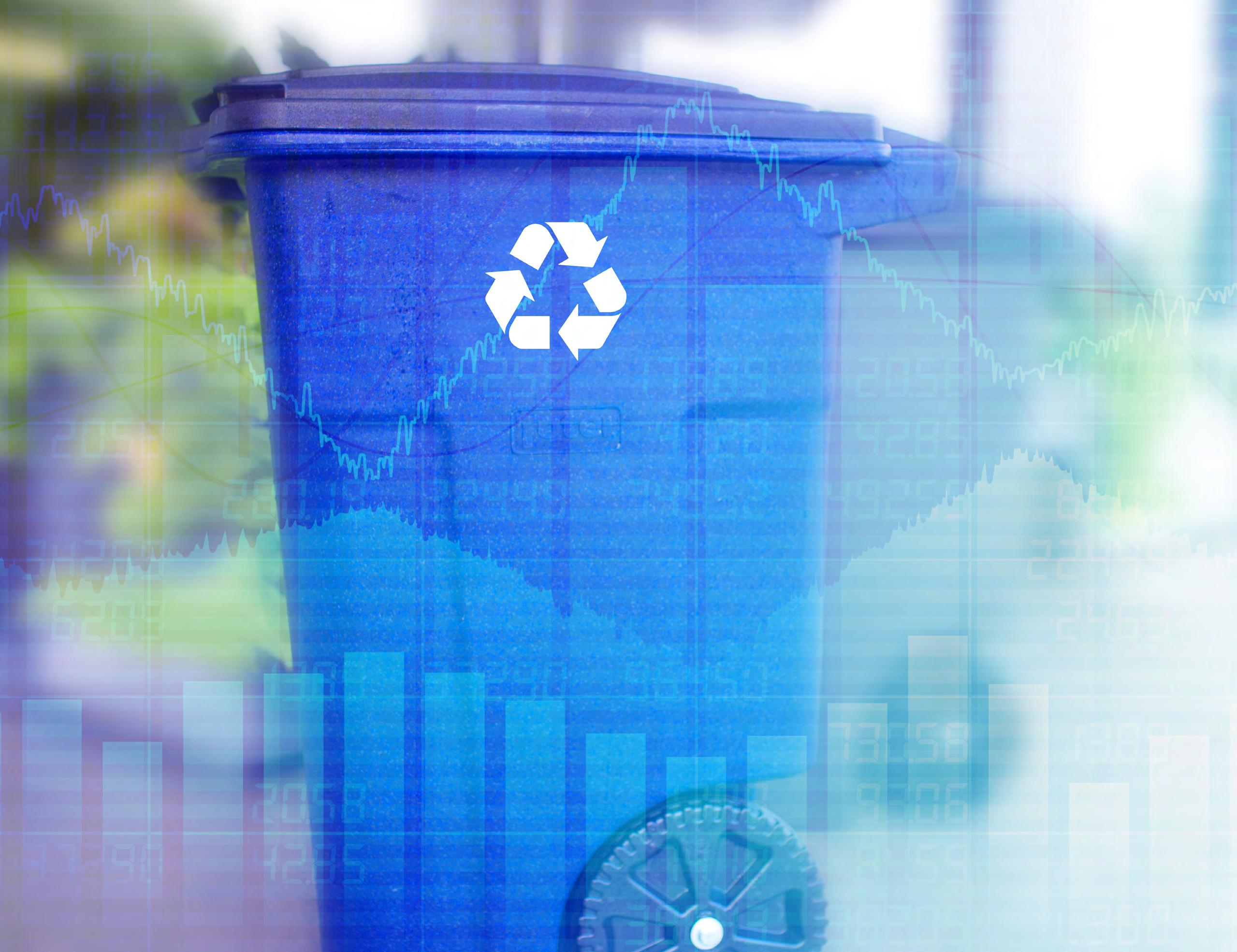
5 minute read
Pathway to Circularity to Advance Materials
The ideal destination of a circular economy where waste is eliminated is clear; what hasn’t always been evident is how to get there. That’s why we published the Bridge to Circularity report, a roadmap designed to address systemic issues in the U.S. recycling system and catalyze the transition toward a circular economy for packaging. Endorsed by the Ellen MacArthur Foundation, the report established a set of concrete actions to create an improved system.
With that roadmap in hand, we’ve organized our work going forward around three key findings:
Finding
The speed of packaging innovation has outpaced the capabilities of recycling infrastructure.
1
In its current form, the U.S. recycling system cannot deliver the supply of recycled materials demanded by the New Plastics Economy Global Commitment.
2
Initiative
Pathway to Circularity
Unlocking Supply
Intractable underlying challenges necessitate a parallel exploration of how to build a sustainably funded and responsive future system that addresses the current gap in infrastructure investment of $9.8 billion.
3
Recycling System of the Future and Transformative Policy
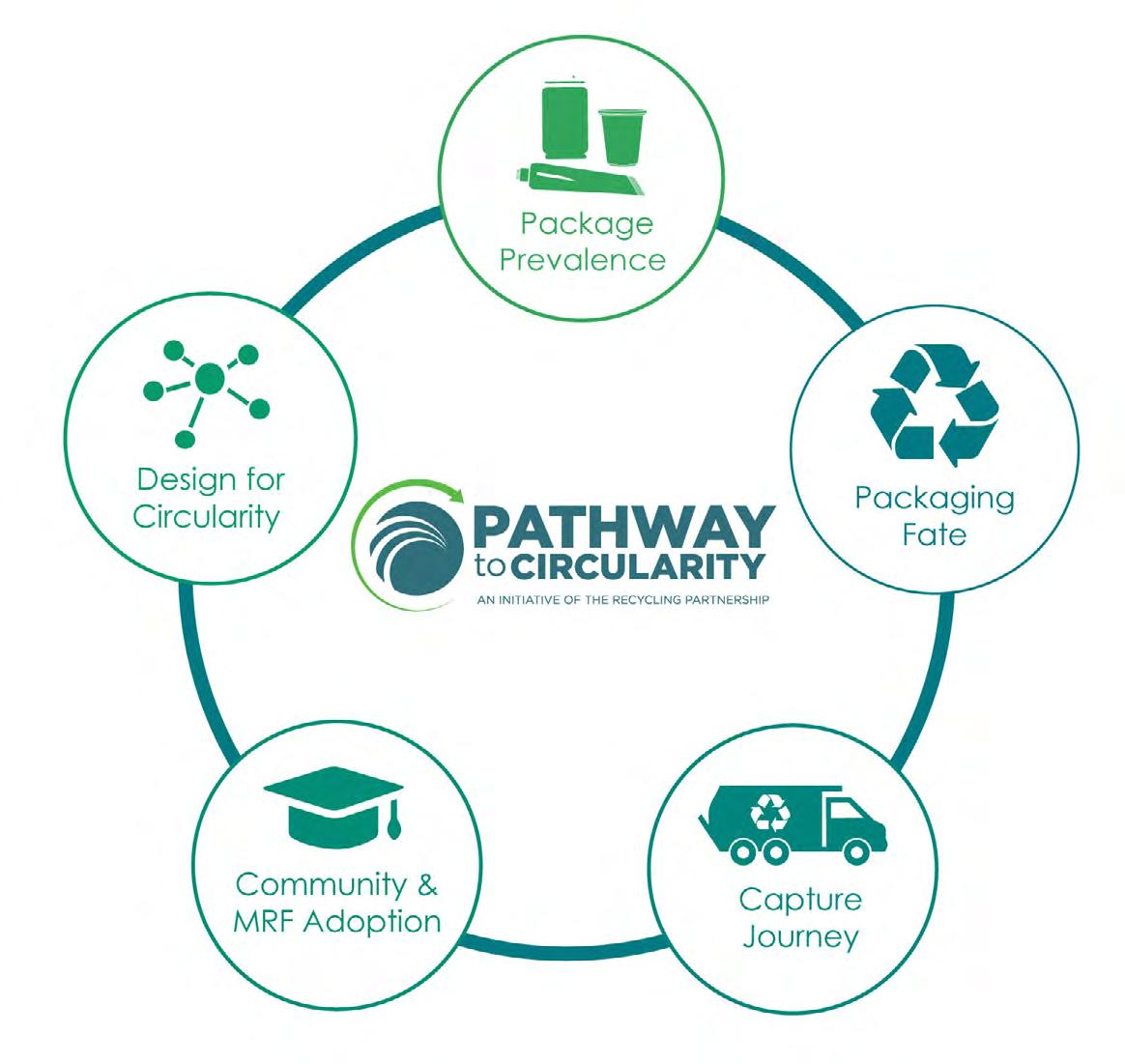
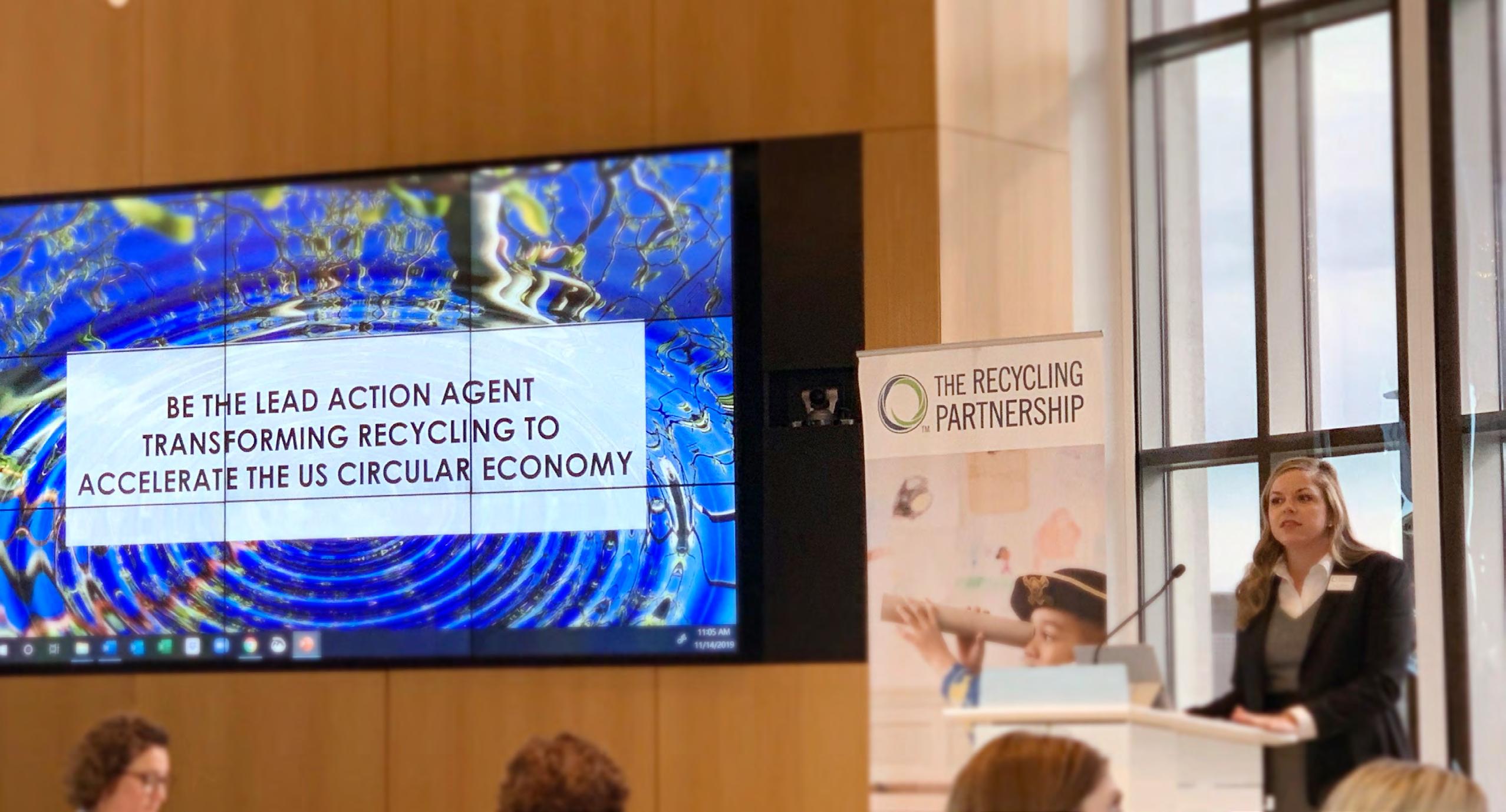
There is no single solution to transition to a circular economy for packaging. We must focus on improving recycling while seeking ways to reduce and reuse materials. Industrywide coordinated efforts will be needed to advance circularity solutions for all materials. Our Circular Ventures team focuses on identifying, and then bringing, these solutions to life.
The Partnership as a Change Agent – Pathway to Circularity
Many companies have ambitious sustainability goals related to the recyclability of their packaging portfolios. How to achieve those targets is not always clear, especially when it comes to critical factors such as end market development, MRF acceptability, and community engagement. That’s why we launched the Pathway to Circularity to guide producers
through a strategic assessment to help them navigate the complexity of the industry, ensuring their packaging is recyclable and recycled in practice.
Another output of the Pathway to Circularity aligns the industry on new standards and concrete steps to achieve circularity and true recyclability. To set these standards, we are convening the Pathway to Circularity Industry Council which includes representatives from more than 30 businesses and industry organizations representing all materials types and key stakeholders. Together, we will catalyze system change. This is not something any one organization or business
can do alone. That’s why we are providing a platform to enable pre-competitive collaboration through material and packaging-specific coalitions to solve packaging challenges.
Polypropylene Recycling Coalition – An Example of the Pathway in Action
In order to improve the system, we must also work on individual materials. The Pathway to Circularity methodology and emerging strategic assessment process provides the guidance to address unique challenges of specific packages and materials. The Polypropylene Recycling Coalition is an example of a Pathway to Circularity material-specific collaboration to build the pathway to circularity in the U.S.
While polypropylene (most commonly seen in yogurt cups, butter tubs, and coffee pods) is a recyclable material, it can often be included in the mixed plastics (3-7) bale, and consequently does not have its own recycling pathway.
Through the Polypropylene Recycling Coalition, industry leaders are collaborating to address this challenge head on. The Coalition will provide grants, conduct research, and support education to increase curbside recycling access for
polypropylene. By working together, we aim to ensure polypropylene is widely accepted for recycling and ultimately reaches a high recycling rate so it can be reused rather than wasted.
Addressing System Challenges for the Good of All Materials – Film & Flexible Packaging
Due to its convenience and comparatively low carbon impact, more companies are using flexible plastic packaging. Yet, plastic film and flexible packaging is difficult to collect, sort, and process, and its thin, flexible properties make it a top contaminant in MRFs. We are working to address these challenges through the Film and Flexibles Coalition. Through this Pathway to Circularity initiative, we are building the necessary knowledge, tools, and partnerships to address this complex challenge.
Together with leading companies and organizations, we are creating the plan to explore potential systems to collect and sort film and flexible materials, providing strategies to engage consumers to be part of the solution, and working to ensure healthy end markets. Ultimately, we aim to have a scalable solution for recovering film and flexibles packaging while allowing communities to reduce contamination for the good of all materials.
Creating Our Future Together – Aligning Industry Efforts to Achieve a Circular Economy
The Polypropylene Recycling and Film and Flexibles Coalitions are just a couple of examples of The Recycling Partnership’s collaborations to align industry efforts to achieve a circular economy. In early 2020, we convened paper and metal industry stakeholders, including mills, recyclers, MRFs, manufacturers, consumer brand companies, and industry associations, to discuss top headwinds and brainstorm resolutions to create a successful recycling future together. We are also working to advance tubes on the Pathway to Circularity as well as other materials and packaging formats.
Transitioning the U.S. to a circular economy is too big for any one entity to accomplish alone. That’s why we are accelerating efforts by supporting the development of a Plastics Pact in the U.S. In November 2019, The Recycling Partnership was appointed to be the lead coordinator, working with Ellen MacArthur Foundation and World Wildlife Fund to bring the U.S. Plastics Pact to fruition. The U.S. Plastics Pact will bring together companies, government entities, NGOs, researchers, and other stakeholders to work collectively toward a circular economy for plastics.
The U.S. Plastics Pact is a collaborative alliance designed to thread together organizations and initiatives that have the potential to move the needle in the U.S. by amplifying the great work already being done and collaborating to fill gaps. The Plastics Pact serves as a model as The Recycling Partnership works to build the roadmap to the circular system of the future where all materials are carefully thought of as resources rather than wasted.


